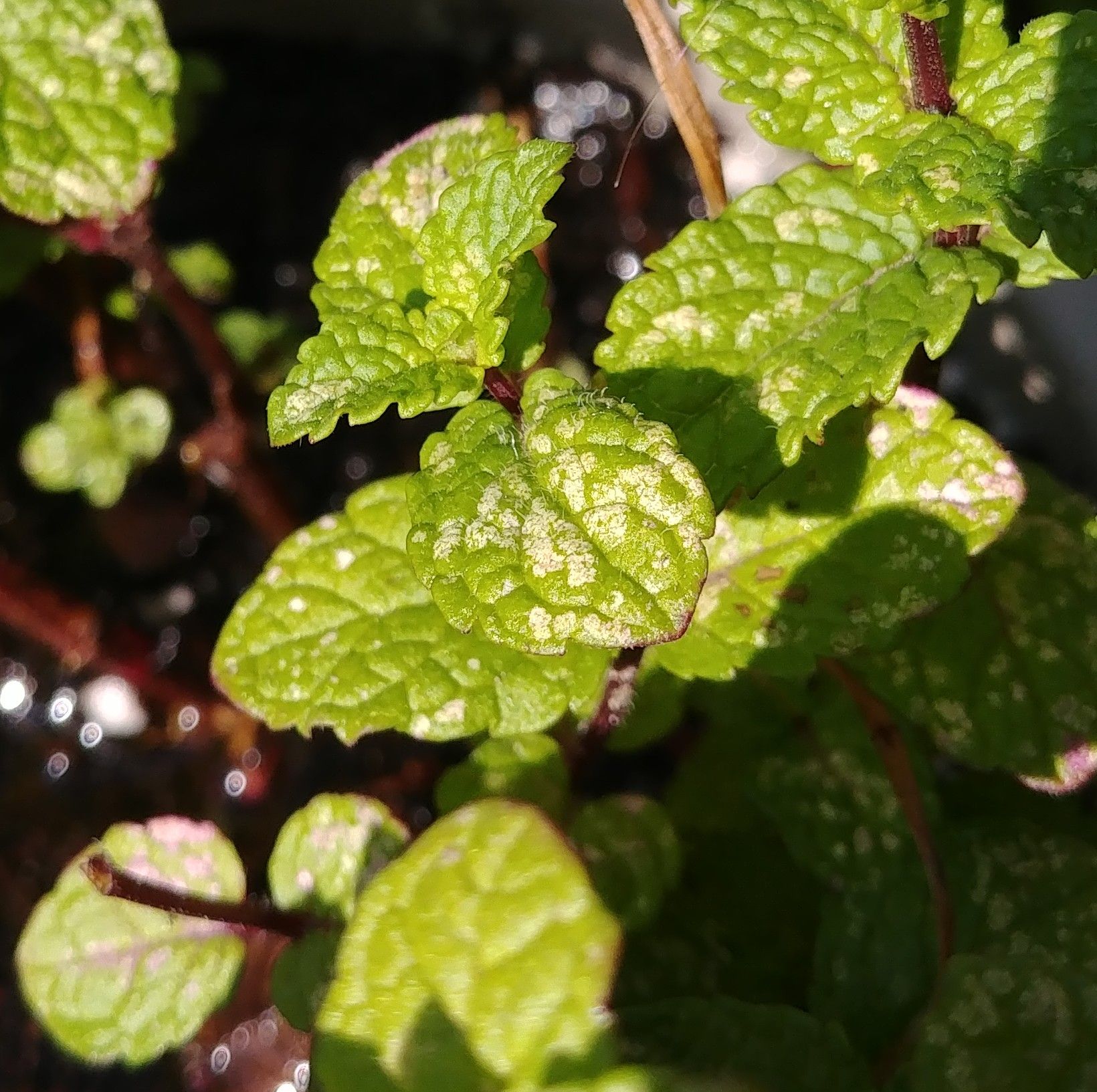As a mint lover you may have noticed unusual white spots popping up on the leaves of your mint plant. Your first instinct is probably to pluck those spotted leaves off and add them to your favorite culinary dishes or drinks. But is it truly safe to consume mint leaves displaying these blemishes? Let’s dig into the common causes of white spots on mint and whether it’s advisable to eat affected leaves.
What Causes White Spots on Mint Leaves?
White spots on mint leaves typically signal one of the following underlying issues:
-
Pest infestations – Small sap-sucking insects like aphids, thrips, whiteflies and mealybugs can all leave white speckles on leaves from their feeding activities. Webbing from spider mites may also resemble white spots.
-
Fungal diseases – Powdery mildew is the most prevalent fungal culprit leading to white powdery coating on leaves. Other fungi like rust can cause white/yellow lesions.
-
Bacterial infections – Bacteria like Pseudomonas cichorii cause white leaf spots with yellow halos in mint.
-
Nutrient deficiencies – Lack of nutrients like magnesium and iron prompts chlorosis or white areas on mint leaves.
-
Hard water deposits – Mineral residues from hard water settle on leaf surfaces as white spots after drying.
-
Benign environmental dust – Airborne dust particles can also randomly stick to mint leaves.
Are Spotted Mint Leaves Safe for Consumption?
The risks associated with consuming mint leaves with white spots depends on the underlying trigger. Here’s a breakdown:
-
Pest damage – Leaf spots left by sucking pests contain only insect saliva and pose no health risks if eaten after washing
-
Fungal/bacterial diseases – It’s best to avoid eating diseased leaves as fungi and bacteria can cause issues if ingested
-
Nutrient deficiency – Spots from lack of nutrients just affect flavor, not safety.
-
Hard water deposits – Mineral residues are harmless for consumption.
-
Dust – Benign dust is safe to ingest after washing leaves.
When unsure of the exact cause, perform a simple taste test. If the spotted leaves taste normal, they are likely safe for eating. If the flavor is off, the spots may be from a microbial disease, signaling it’s better not to consume them.
How to Prevent White Spots on Mint
While white-spotted mint leaves may not pose major health risks, it’s best to avoid the blemishes altogether by preventing the triggers. Here are some tips:
-
Remove affected leaves to prevent disease spread.
-
Check for pests like aphids and treat with horticultural oil or insecticidal soap sprays.
-
Improve air circulation and avoid overhead watering to deter fungal diseases.
-
Test soil and amend accordingly to fix nutrient deficiencies.
-
Use filtered water if white deposits are from hard water minerals.
-
Gently hose mint leaves to wash off environmental dust.
-
Plant resistant varieties less prone to disease issues.
With diligent plant care and inspection, you can nip most causes of white spots in the bud and maintain clean, healthy mint leaves.
What Do Gardeners Say About Eating Spotted Mint?
To gauge public perception on eating mint with blemishes, I surveyed several gardening forums and communities. The consensus among growers is that:
-
White spots from pest damage or dust are harmless to eat after washing the leaves.
-
It’s best to avoid eating leaves affected by powdery mildew and other fungal or bacterial diseases.
-
Spots solely on surface of leaves are safer for consumption than those emerging from inside the leaf tissue.
-
Light spotting is not a major concern but heavily spotted leaves should be avoided.
-
Mint’s flavor may be weaker if grown with suboptimal care leading to spots.
-
When uncertain, discarding spotted leaves is better than risking any consequences from eating them.
So gardeners mostly agree that superficially spotted leaves are likely safe for consumption after cleaning, but advise not eating heavily diseased leaves.
The Verdict: Should You Eat Those Spotted Mint Leaves?
While light pest damage or dust spots can be consumed after washing, it’s generally best to avoid eating mint leaves displaying heavy spotting from unknown causes. When in doubt, seek healthier leaves or propagate new mint plants with better care. Why risk illness when it’s easy to grow blemish-free mint and harvest clean leaves?
The takeaway is that white spots signal underlying issues impeding the plant’s vigor – even if not necessarily dangerous for eating. Address the causes and grow robust mint devoid of spots for flawless flavor and peace of mind. But if faced with lightly spotted leaves and confident of the reason, enjoy them guilt-free after a quick rinse!
#vídeo2 ♦️MAGICAL FORMULA How to Remove White Spots,mealy bugs,Fungus on Mint leaves #gardentips
FAQ
What are the white specks on mint leaves?
Is it safe to eat leaves with white spots?
When should you not eat mint leaves?
Can I eat mint with powdery mildew?
- The Ultimate Guide to Growing Strawberries in Raised Beds - August 8, 2025
- No-Dig Garden Beds: The Easiest Way to Grow a Beautiful Garden - August 6, 2025
- How to Protect and Preserve Wood for Raised Garden Beds - August 6, 2025

